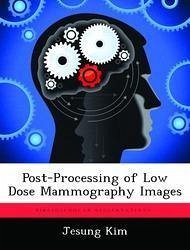In mammography, X-ray radiation is used in sufficient doses to be captured on film for cancer diagnosis. A problem lies in the inherent nature of X-rays to cause cancer. The resolution of the images obtained on film is directly related to the radiation dosage. Thus, a trade off between image quality and radiation exposure is necessary to ensure proper diagnosis without causing cancer. A possible solution is to decrease the dosage of radiation and improve the image quality of mammograms using postprocessing methods applied to digitized film images. Image processing techniques that may improve the resolution of images captured at lower doses include crispening, denoising, histogram equalization, and pattern recognition methods.
Hinweis: Dieser Artikel kann nur an eine deutsche Lieferadresse ausgeliefert werden.
Hinweis: Dieser Artikel kann nur an eine deutsche Lieferadresse ausgeliefert werden.








